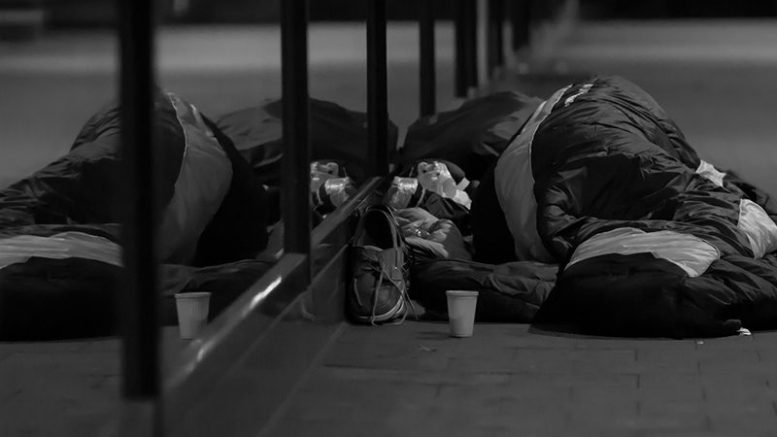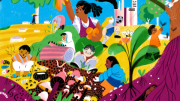Guest written by Maya Holland (’23)
*Content Warning: Discusses Sexual Exploitation and Rape*
Statistics
If you look up the average number of children or adults that are involved in sex trafficking, you will generally be given a very high guess that some researcher pulled from a hat with no backing behind it — simply because there isn’t any. Sex traffickers are devious, just like most criminals. Instead of keeping children locked in cages or being sold while blindfolded in crates like most TV depictions, they put children and young adults in positions where if the police or anyone found out about their scheme, the victims would be facing the prosecution, not the grandmasters behind it.
Sex traffickers integrate their victims into a form of prostitution, which is illegal in every state except 10 Nevada counties. This way, if a victim is ever discovered by law enforcement, they would be convicted and sent to jail. While those lofty numbers may seem like true statistics, no one truly knows how many people are involved. However, researchers have started to investigate and investigate the ties between prostitution rates and sex trafficking.
Donna Hughes, a professor at Rhode Island University who chairs the Women’s Studies Department, found that 70% of those that were trafficked across international borders were women, most commonly between the ages of 11 and 14. However, there were children who became involved at the age of 5. A DMST victim, Domestic Minor Sex Trafficking Victim, stated that most women in her group had been doing this since they were 8 or 9 and were now over the age of 23, unable to leave.
With all of the data mentioned above, David Kanouse, a researcher with a Ph.D. in Psychology from Yale University, discovered that the United States is the top third highest country in the world for prostitution with estimates ranging from 1 to 2 million prostitutes in the country. That being said, over 700,000 women and countless men are being forced into commercial human trafficking each year, many of whom are sex trafficking victims.
How To Prevent This
With everything mentioned above, how can we prevent this from happening to us? Videos circulate around the internet, specifically TikTok, with a multitude of ways to prevent events from happening, but how can we incorporate these into our daily lives? Briefly, I am going to explain how I have integrated these methods into my day-to-day life, so much so that I barely recognize I am taking the time to protect myself. I work relatively late into the night at my weekend job and I happen to work right next to a packed bar filled with drunk individuals, and I tend to not feel safe when walking the 300-foot distance to my car. Before getting within 200-feet of my vehicle, I always check for anyone underneath my car or a neighboring one. Attackers have been known to sit under cars and cut their victim’s Achilles tendon leaving them unable to run away. Secondly, I always lock my car. I do not care if I am in a safe location or if I trust my neighbors, I always lock my car and check to make sure all 4 doors are locked. The moment I get to my car, I check to make sure it was locked, and then I quickly look into the back seat and trunk to make sure no one hid inside while I was away. Then once I check that my car was untouched, I quickly get into my vehicle and do a quick check again, then lock it. This way I know I am in a safe place and environment. I do this everywhere I go when I get in and out of my vehicle. Aside from getting to my mode of transportation, I carry one of those self-defense keychains that everyone raves about and if I do not have one on me, I hold a key in between my fingers. These techniques are obviously only helpful when getting into a vehicle but there are thousands of other safety measures I find super useful. Now, some of you may be thinking this is being paranoid or too much, but I often do not worry about this happening to me because I know I have these safety measures in place. Although this does not guarantee my safety, it’s good to know I have methods in place to prevent anything from happening.
What Goes Through Their Heads
*Additional content warning: This portion mentions rape and rapists’ thoughts*
The site I am going to be pulling from is called Through The Eyes of A Rapist and these are examples of what rapists or kidnappers look for in potential victims.
- They first look at the hair. Ideally, they want someone with long hair or hair in a style that can be easily grabbed such as a ponytail, bun, or braids.
- Secondly, they look at clothing. They want something that can be easily ripped off and most carry scissors for this purpose.
- Thirdly, they look for people who are busy doing something like scrolling through a phone or looking in their purse.
- These offenders often kidnap around 5:30 to 8:30 in the morning when there are not many people around. They also lurk in places where they can easily take their victim to a different location. The most common places are parking lots and public restrooms.
- They often never carry weapons because the sentence for rape is 15 years more when done while using a weapon of some sort.
- They often give up on people who pick a fight and lose interest. They also ignore people who have objects that can be used as a weapon or give distance like an umbrella.
- Offenders give up if you start a conversation with them and look them straight in the face before they start to attack. Now you’ve seen their face and can identify them in a lineup.
Not every offender follows these exact guidelines but knowing these can help you understand what is going through their heads and can ultimately protect you in the end.
Other Techniques
The best advice anyone can give you is to fight back. Never ever stop fighting no matter what the offender tells you. There are many self-defense mechanisms you can find on the internet and plenty of classes you can take on the subject matter.
Other safety tips given by the National Human Trafficking Hotline include:
- Always trust your judgment or gut feeling.
- Always let a trusted individual know if you feel you are in a dangerous situation or someone is acting suspiciously.
- Set up safety words with a trusted individual.
- Always keep important information and documents with you at all times. No one is allowed to withhold these documents from you.
- Memorize important numbers like a trusted individual’s.
- Make sure you always have a form of communication, your banking information, and important medications with you at all times.
- Have a safety app on your phone. Apps like BSafe (that’s my personal favorite), allow you to record video and voice interactions, it has a siren option, it allows friends and family to follow your movements, and has tons of other super helpful features to ensure your safety.
Situations and Scenarios
As stated by Anti-Slavery International, human trafficking does not only include commercial sex trafficking. It also includes domestic servitude, forced marriage, and organ removal.
- According to the U.S Department of State, these are ways you can help indirectly with these problems:
Be conscientious when buying and selling products. If you want to find out where that shirt is from or where your produce was picked, you can search here at https://www.responsiblesourcingtool.org/ or https://www.dol.gov/agencies/ilab/reports/child-labor/list-of-goods. - Be there for someone in need. Attackers tend to look for victims who lack a good support system.
- If you own a business, you can provide internships, skill training, or jobs that can help human trafficking survivors.
Human trafficking is scary but it is a real thing that is happening all over the world. It is so important to keep not only yourself safe, but others as well. Researching and understanding possible scenarios and self-defense techniques can save your life in a multitude of ways and just remember; you can never be too careful.






Good job, Maya! A very well written article!
Julia